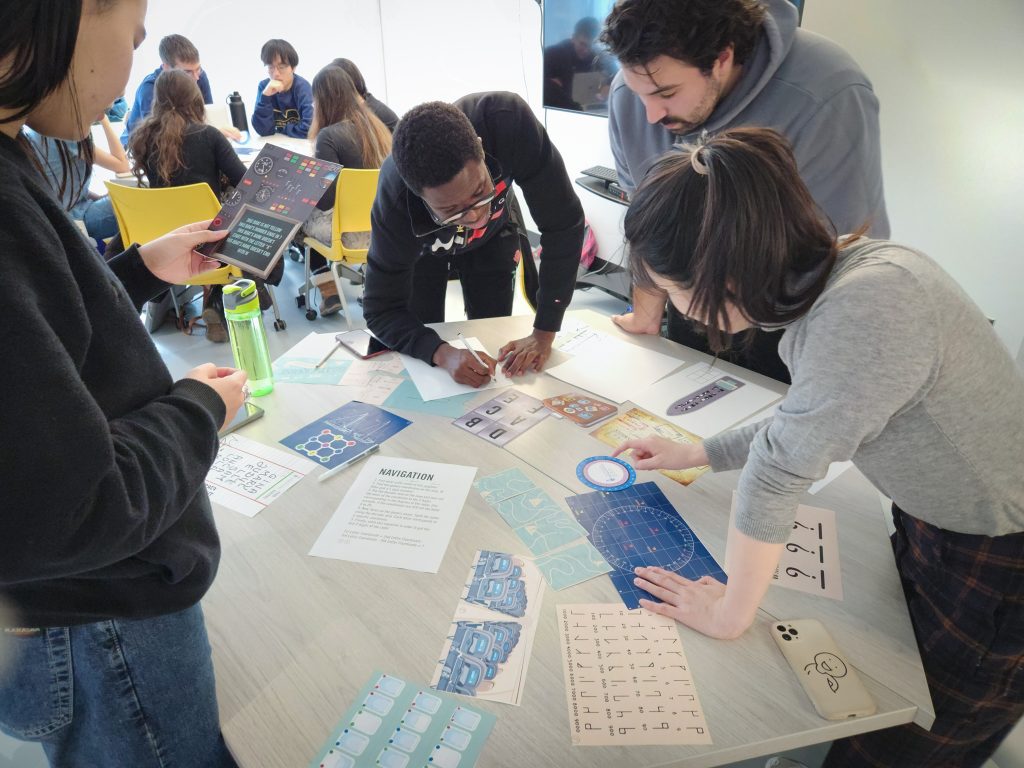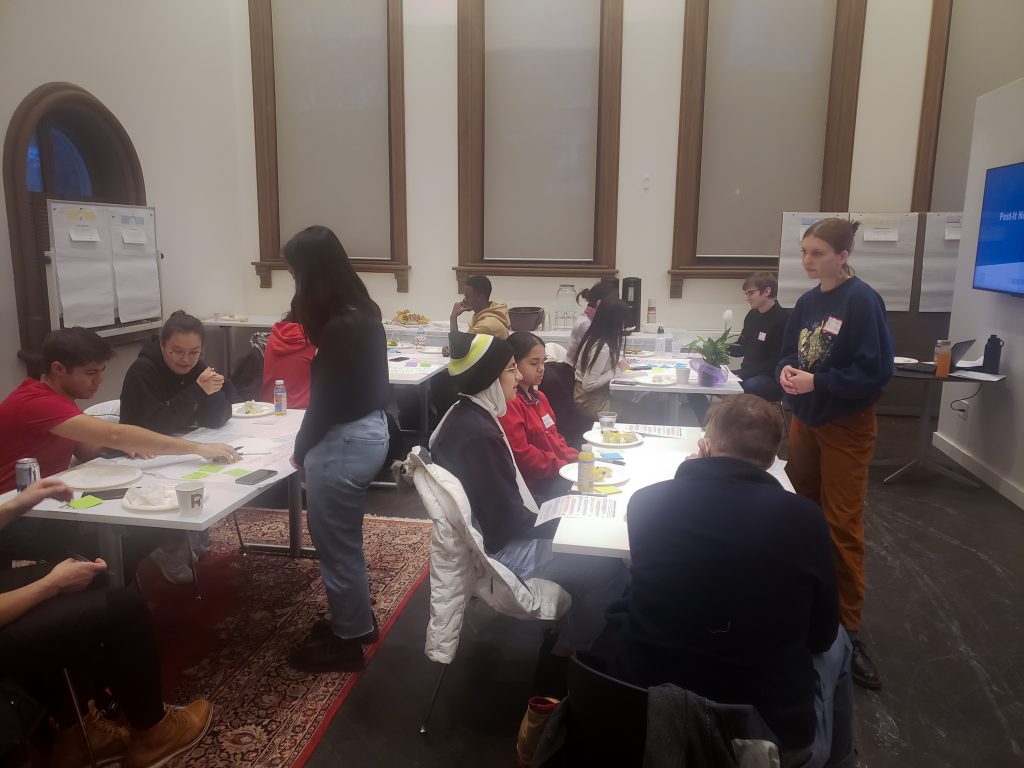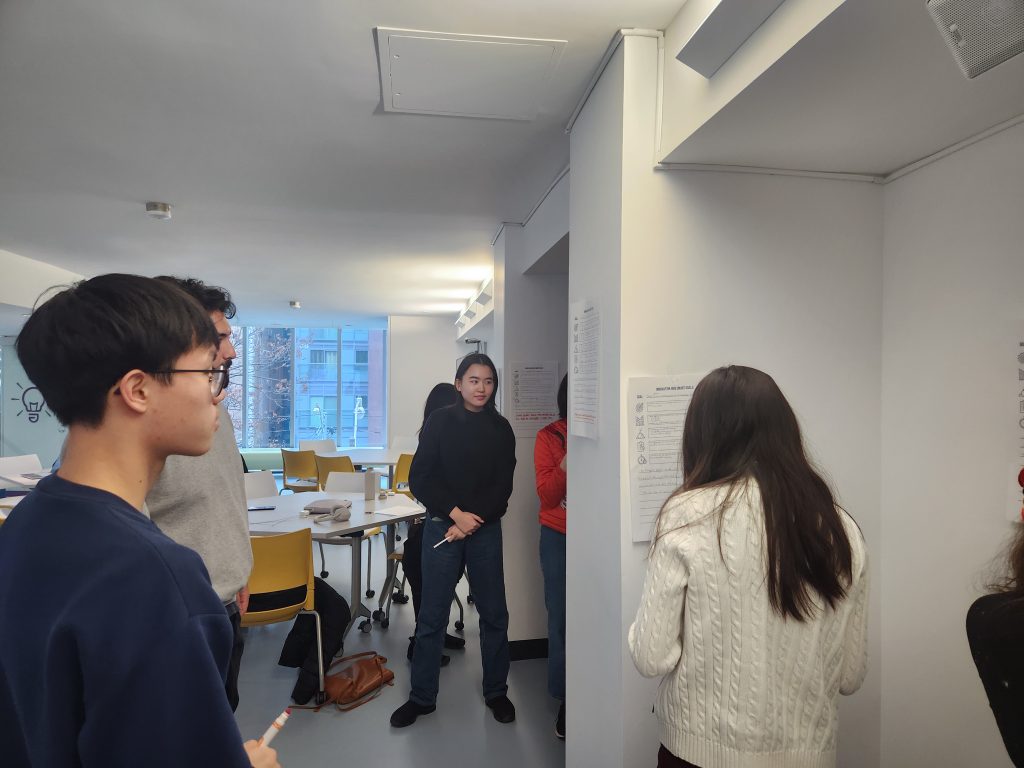
In Reese’s What’s Your Why, she explores her journey as a Design Researcher and the many important skills and techniques she has gained, reflecting on how the role emphasizes the effectiveness and importance of human-centric design.
Written by Reese Halfyard, Design Researcher, Bachelor of Information

I became a design researcher for the Innovation Hub in May of 2022. As a passionate designer with a strong background in user experience, I knew there would be some overlap. I wanted to grow and expand my qualitative research knowledge and gain real-life design research experiences. I was initially hired on to the University College Re-Design team, and later contributed to the Future Dining at Chesnut project. Working on two different projects was extremely insightful and allowed me to further appreciate the effectiveness of human-centric design.
Understanding Design Research
When I started on the UC re-design project, I was still unsure what my responsibilities would be. Although I had conducted case studies in my previous user experience design courses, I knew the process would be different. My first thought was, what does design research mean?

The purpose of design research is to connect with users and create with, rather than for them. At the Innovation Hub, our users are the students, and we prioritize their feedback. We conduct primary research with a variety of student stakeholders to ensure spaces, facilities, and programs are catered to the people utilizing them. Fortunately, I was able to connect this to my design background and discipline of study. For the University College project, I conducted over a dozen interviews and feedback sessions to better understand students, faculty, and staff experiences with UC.
Prioritizing Empathy

A very crucial part of design research is being able to empathize with the user. If we can’t empathize with the user, we aren’t understanding their experiences. I learned quite quickly in this role that empathy guides and builds the design. Since everyone who works at the iHub is a U of T student or recent graduate, we can empathize with other students’ experiences. This is a very crucial aspect to the role that makes the iHub stand out compared to other initiatives.
Uplifting the User’s Voice
In my time, I have conducted over two dozen interviews and feedback sessions. These conversations have taught me a lot about the purpose of design research and user experience. It appears many students are not aware of how important their voices and experiences are. My job is to ensure student voices are amplified throughout the entire process and seen in the end product.

As I approach the end of my degree and work study, I have developed an appreciation for the experiences I have gained from this role. With two projects under my belt, design research has taught me a lot about the importance of user-centric design. I hope my work here will amplify the university experience for students to come. For me, I have learned that user-centric design builds equitable, accessible, and inclusive spaces.
0 comments on “What’s Your Why: Empathy to Amplify Voices”